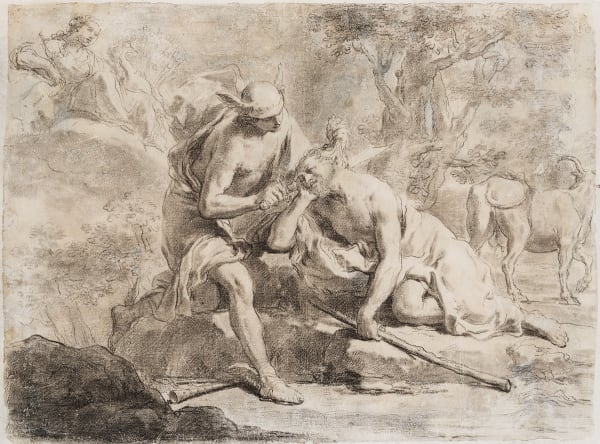Faithfulness | Betrayal: Tales of Unfaithfulness and Loyalty. Artworks from the 16th to the 21st century | Paris
After the success in 2011 of the exhibition Fior di Barba and after riding the wave of the widespread belief in an imminent end of the world in 2012 with the exhibition End or Rebirth, today we want to deal with a theme that is "as old as mankind": fidelity versus betrayal; their implications, their values, their effects, their reasons ... To betray ourselves in order not to betray others? To betray others in order to be faithful to ourselves?
The iconography of the works is the leitmotif of a discourse which, ranging from mythology to the Holy Scriptures, recounts the habits and passions inherent in the human soul, making these attitudes and the works still universal and topical.
The inescapable force of Love, which blind by nature commands human actions and inexorably drives us towards pleasure. The lascivious vision tickles the desires and pleasures of conquest, undermining marital fidelity, which very often succumbs under the pressure of passion.
Absurdly, the symbol of this human frailty and instinctuality is embodied by a god, Jupiter, whose numerous 'escapades' have tickled the imagination of artists throughout the ages. A series of works inspired by the unfaithful adventures recounted by Ovid in his Metamorphoses are part of this happy vein.
Betrayal or infidelity is therefore the basis of metamorphosis, of change.
In order to 'evolve' it seems necessary to 'betray' ourselves; in order to gain access to a new identity, to emancipate ourselves from a self-image that no longer corresponds to us, it seems necessary to pass through 'betrayal'.
We change, we betray in the name of a higher fidelity, in search of a greater adherence to our most intimate identity or, even worse, we remain faithful to someone or something by abdicating to ourselves.
Betrayal is also central to Christianity in general. Was it not Adam and Eve who broke and betrayed the divine laws by eating the apple, and yet made our way on earth? The sacred texts are a geography of betrayals, from Bathsheba, Delilah, Jacob and Hagar to Judas.
The betrayal perpetrated against Christ and his sacrifice was intentional and sought for the realisation of Humanity's salvation.
Fidelity and betrayal are therefore two antithetical but fundamental aspects that are functional to the dynamics of human growth, virtue and sin, light and shadow that Humanity must integrate within itself and of to which art has always spoken.
Exhibition from 14 November to December 2013
Monday to Saturday - 11h / 19h
45, rue de Penthièvre - 75008 - Paris







